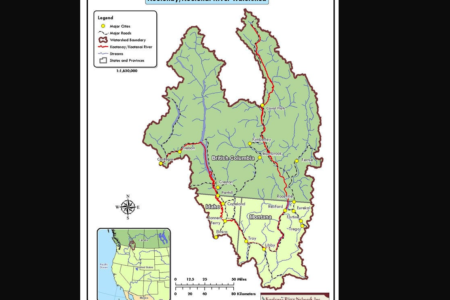World sacred forests mapped out
By David A Gabel, ENN
A team of scientists from the University of Oxford are working on a world map which shows all the land owned or revered by various world religions.
This “holy map” will display all the sacred sites from Jerusalem’s Western Wall, to Masjid al-Haram in Mecca, to St. Peter’s Basilica in Vatican City.
Just as interesting, the map will also show the great forests held sacred by various religions. Within these protected lands dwell a wide variety of life and high numbers of threatened species.
The sacred land mapped out by the Oxford researchers is not necessarily owned by a certain religious community, but rather contains sacred connotations.
They estimate that about fifteen percent of all land on Earth is “sacred land”, and eight percent of all land is owned by a religious community. Much of the land held sacred is forest.
The Oxford researchers are focused on determining this land’s value in terms of biodiversity. They are from the Biodiversity Institute in the Oxford Martin School. A lot of the sacred forests managed by the local community, but receive no formal protection.
The researchers hope that their scientific study will help guarantee official protection from regional and national governments.
Initially, efforts were only made to map out land controlled by the large mainstream religious groups. Teaming up with the Alliance of Religions and Conservation (ARC), the Oxford team decided to investigate religious land controlled by all groups. The new initiative is in effect, as the team has already planned visits to areas in India, Ghana, Japan, and elsewhere.
The first step in their research is to delineate where the sacred land is by investigating where boundary lines. The status of the land and its borders must be known before a biodiversity assessment can take place. The researchers will also assess the land’s value in carbon dioxide absorption, its abundance of medicinal plants, as well as the value to the local people.
According to Dr. Kathy Willis, one of the researchers at Osford’s Biodiversity Institute, “One of the key research themes of the Biodiversity Institute is conservation beyond protected areas. With the help of emerging technologies, the Biodiversity Institute researchers are developing tools that can help evidence-based research.”
“We urgently need to map this vast network of religious forests, sacred sites and other community-conserved areas to understand their role in biodiversity conservation,” added Dr. Shonil Bhagwat, also on the research team. “Such mapping can also allow the custodian communities, who have protected these sites for generations, to secure their legal status.”
- For more information: http://www.biodiversity.ox.ac.uk/

























